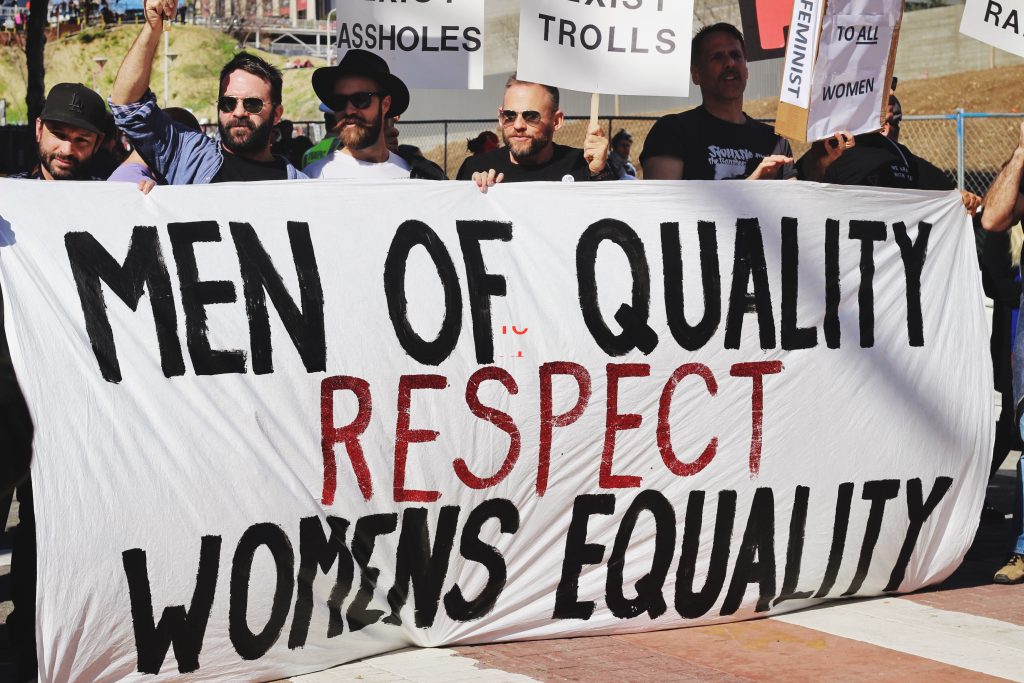
Let’s Talk About Sex: Harvey Weinstein and the Bystander Effect
The story of Harvey Weinstein’s fall into disgrace bears remarkable similarities to the allegations that emerged a few years ago in the U.K. against the British celebrity, Jimmy Saville. What these two cases have in common bears some scrutiny in terms of how sexually predatory behaviour is perpetrated, perceived, and ultimately perpetuated. (photo credit: Samantha Sophia)
(photo credit: Samantha Sophia)
The male perpetrators in each of these cases had achieved a certain status and standing in society; they were powerful and popular. Their alleged predatory behaviour was directed at the young and vulnerable. The predatory behaviour spanned decades. The full extent and nature of the predatory behaviour has emerged, not through investigation by the institutions or corporations who employed, paid or otherwise supported the accused perpetrators, but in a piecemeal fashion due to the bravery and conviction of people willing to come forward, and some dogged journalistic efforts to bring these matters into public consciousness.
Most incidences of sexual harassment or abuse occur in private. Where the perpetrator is a powerful and popular person of social standing the prospect of speaking up against unwelcome behaviour is daunting and, more often than not, debilitating. It is not unusual for victims to feel shame, self-loathing, or a sense of blame or responsibility, particularly where the incident takes place in an environment outside of the normal workplace, such as a hotel room, a private house, or at a bar. In a work context, this is compounded by a fear that a complaint may not be believed, or that retaliation may follow. Research looking at why it is women fail to speak up suggests that this fear is well-founded.
That this should be so is, of course, wrong, but it is an unfortunate consequence of how society tends to treat people who make allegations of sexual harassment or rape; namely with suspicion, by looking to see what behaviour on their part could have incited such a response. In its 2017 Criminal Justice Report, the Australian Royal Commission into Institutional Responses to Child Sexual Abuse cites the following “myths and misconceptions” about sexual offences that have affected the criminal justice system’s responses to sexual abuse prosecutions, namely:
- women and children make up stories of sexual assault;
- a victim of sexual abuse will cry for help and attempt to escape their abuser that is, there will be no delay in reporting abuse and a ‘real’ victim will raise a ‘hue and cry’ as soon as they are abused;
- a victim of sexual abuse will avoid the abuser – that is, a ‘real’ victim will not return to the abuser or spend me with them or have mixed feelings about them;
- sexual assault, including child sexual assault, can be detected by a medical examination – that is, there will be medical evidence of the abuse in the case of ‘real’ victims.”
These myths and conceptions are not confined to the criminal justice system but are pervasive across many cultures. This social context is not lost on perpetrators of sexual abuse.
Breaking the conspiracy of silence
What is perhaps more troubling than the behaviour of the alleged perpetrator in each of these cases is the system that allowed such behaviour to continue for the length of time that it did. In both the Weinstein and Saville cases the perpetrator’s behaviour appears to have been an ‘open secret’, widely known by those within the entertainment industry.
A report by the Telegraph claims that Harvey Weinstein had the benefit of a contract, drawn up in 2015 that contains a clause ensuring that the Board could not terminate his employment over sexual harassment if he settled such claims, provided that the payments were made out of his own money. If this claim is true, it would suggest that the Board not only knew of, but tolerated and accepted Harvey Weinstein’s behaviour as a normal contingency, a mere financial risk that they could contractually safeguard against. Less thought appears to have been given to the morality, or reputational risk, of condoning such behaviour. Even less thought seems to have been given to the potential legal liability should it be found that the company owed a duty of care to the actors who are found to have subsequently suffered at the hands of Harvey Weinstein.
The entertainment industry is just one of many in which a culture of complicity exists that ensures the prevalence and persistence of sexual harassment. This phenomenon is described by Louise Fitzgerald in a recent editorial for the Journal of Trauma and Disassociation as ‘institutional betrayal’ whereby organisational and institutional actors maintain a system of entrenched societal attitudes and beliefs that deny or rationalise the abuse of women.
It should not be left to the sole responsibility of victims to speak out against those who harass or abuse. That responsibility should be shared by those who are witness to or otherwise become aware of allegations of this nature. What is tragically clear is that in these situations many do nothing.
Research conducted by Social psychologists Latané and Darney in the late 1960’s suggests that the mere presence of others may have an inhibiting effect on an individual’s willingness to intervene in an emergency. The ‘bystander effect’ has been used to help explain why it is that people who witness or know of sexual harassment don’t speak up or otherwise intervene to help the victim.[1] The bystander theory suggests that when there are other observers to an incident two things can happen: first, people feel less personal responsibility to intervene, sometimes under the mistaken assumption that someone else is helping or better placed to help. Secondly, people tend to be misled by the calm, non-interventionist reaction of the people around them, a phenomenon known as ‘pluralistic ignorance’. This can happen when people are reluctant or afraid to discuss the issue, so each person tacitly accepts it, afraid to rock the boat or be seen as the troublemaker who identifies the problem.
To actively intervene takes courage. As long as our cultural predilection to worship or defer to those in authority persists, the social pressure to conform is very powerful. There are a number of factors that contribute to the likelihood of bystander effect. The way in which observers perceive and react to incidences of sexual harassment is affected by and differs according to organisational culture, and gender.[2] A recent study by Galdi et. Al. (2017) implicates the objectification of women in the media in creating the ‘normative context’ that facilitates non-intervention on the part of bystanders.
What is clear from the outpourings on social media from victims who have suffered sexual harassment is that bringing this issue into the public consciousness helps those that have been victims find the courage to talk about it. There is also a wealth of research supporting the idea that talking about sexual harassment rather than simply having policies in place can help displace the bystander effect.
From my own experience of advising on cases of sexual harassment, men and women perceive what amounts to sexual harassment very differently. It is clear that there is a need for open and frank discussion about sex, particularly what behaviours amount to unacceptable sexual conduct in the workplace.
[1] MacDonald et al. (2016) ‘Action or inaction: bystander intervention in workplace sexual harassment’, International Journal of Human Resource Management, 27(5), pp. 548-566.
[2] Timmerman, G., & Bajema, C. (2000). The impact of organizational culture on perceptions and experiences of sexual harassment. Journal of Vocational Behavior, 57(2), 188-205.
ORIGINALLY PUBLISHED ON HONG KONG FREE PRESS
- Posted In:
- Employment Law
- Leadership
- Workplace
Farzana Aslam
Director and Principal Consultant at Kintillo, Farzana has over two decades of professional experience including as an employment law Barrister (3 Hare Court, Middle Temple, London), in-house employment Counsel (Goldman Sachs, Asia-Pacific and Japan), Principal Lecturer, Law Faculty, the University of Hong Kong (Professional Ethics, Civil Litigation, Employment Law, Business and Human Rights), and Chair of Justice Centre Hong Kong.
All stories by: Farzana Aslam

